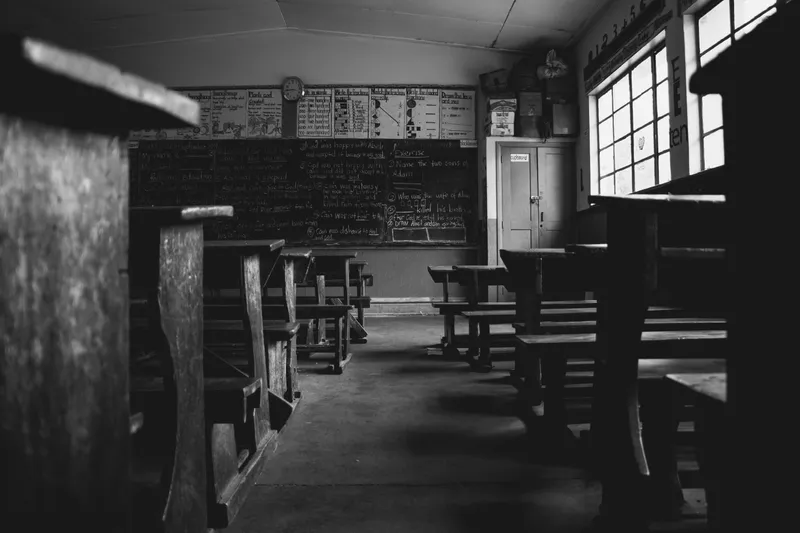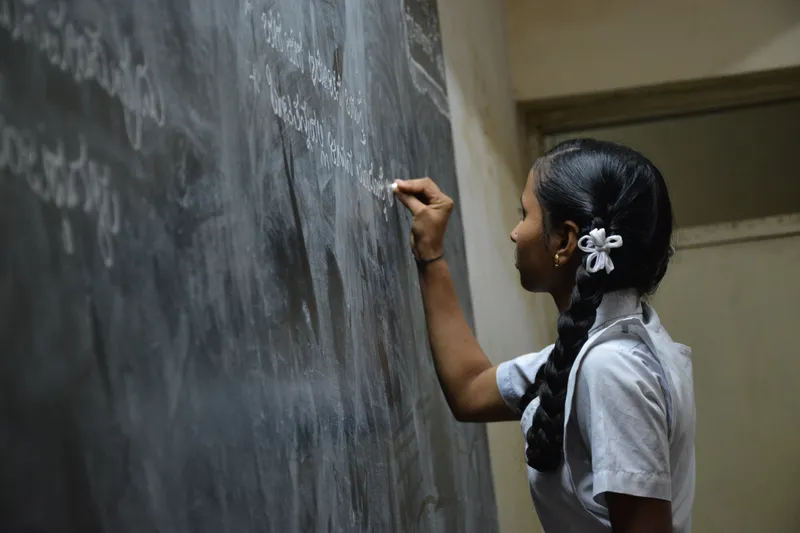Building back better and equal resilient education systems
Before the pandemic, India had six million out-of-school children. Now that number has risen to 10 million - particularly among the poorest and most vulnerable.
A recent news article that highlighted how 43,000 students in Odisha failed to turn up for the Class X exams shook the education system. Another fact-finding inquiry revealed that as schools reopened, students struggled with acute teacher shortage and lack of basic infrastructure. Before the pandemic led to country-wide closure of schools, India and had six million out-of-school children. Now that number has risen to 10 million - particularly among the poorest and most vulnerable. We face a new reality today and schools and learning are set to acquire newer dimensions and modalities in the years to come.
India must act in five primary areas to overcome this crisis and build back better towards achieving Sustainable Development Goal 4 (ensure inclusive and equitable quality education and promote lifelong learning opportunities for all) by 2030. We need to plan and implement a COVID-19 education action plan for an inclusive, gender-responsive, adequately monitored well-coordinated education response.

Many schools in rural India see students struggling with acute teacher shortage and a lack of basic infrastructure.
Political will must be generated to invest in education to enhance quality access to education and to ensure the children’s well-being. Every child must be protected so he/she is safe, healthy, and well to return to a safe school environment and have preparedness plans in case they need to close again. It would also imply that schemes that contribute to optimal growth and development of children are not only continued but are also effectively implemented.
School meals must continue to meet children’s nutritional needs, child protection reporting must be underatken, referral systems adapted during times of school closure, and use of schools as health facilities and quarantine sites is minimal.
Learning must entail that distance learning programmes reach the most marginalised children; incentivise teachers; create inclusive and gender-sensitive safe back-to-school campaigns; provide every child with a learning assessment on return to school to identify appropriate remedial education; create targeted interventions; and expand social protection to get the most marginalised children safely back to school (SB2S). It must also address gender-related barriers to education, including laws, policies and harmful social norms that prevent girls from continuing their education. Lastly, all the efforts to implement and fund the education action plan must be tracked in the areas identified above to keep learning alive. The education system in India needs to prepare for the safe reopening of schools and build back better equal and resilient education systems.
The recent rise in epidemics and pandemics necessitates that we are prepared with alternative and hybrid modes of quality education whenever and wherever traditional and in-person modes are affected. In this regard, the National Education Policy 2020 released amidst the pandemic barely recognises the dire need to build back better and more resilient education systems to tide over any future crisis. However, the NEP recognises the potential that technology holds there is also a need to identify and map its potential in terms of reach, risks, and accompanying dangers.

The education system in India needs to prepare for the safe reopening of schools and build back better equal and resilient education systems.
Four in five countries (India included) implemented distance-learning alternatives during the pandemic with partial inclusivity and when children were asked about the extent of their learning during school closures - eight out of ten children said that they were learning little or nothing at all.
Distance learning initiatives must take into account barriers that the most marginalised and deprived children face in accessing technology. Sixty percent of distance learning alternatives to support children’s learning at home rely on online platforms. The access is even lower amongst girls, children in street situations, migrant children, and children in remote locations as they are unable to access the internet or are without the necessary technology to access distance learning platforms.
Existing digital platforms and ongoing ICT-based educational initiatives must be optimized and expanded to meet the current and future challenges in providing quality education for all. The benefits of online/digital education cannot be leveraged unless the digital divide is eliminated through concerted efforts.
The use of technology for online and digital education must adequately address concerns of equity. Low - and no-tech cost affective options (including paper-based learning materials, radio and TV) need to be widely available and used. Children brought back through child-friendly, age-appropriate, accessible to and inclusive Safe back to school (SB2S) campaigns especially to reach the hardest category of children must be followed with tracking them for regularity. Catch Up Clubs are effective low/no-tech solutions in schools/communities that support the recovery of lost learning in an accelerated mode and help children successfully retain in school.
Community libraries/thela libraries make scarcely available quality reading material easily accessible to children. Wellbeing calls between students, parents and teachers is a low-tech solution that aids psychosocial wellbeing and also keeps track of children during closures. Children’s stories through radio are a popular medium to connect parent and child with ‘me’ time and build language, vocabulary, and comprehension skills.
At the same time, safer school environment will retain children for a longer more sustained time period for which school safety plan can factor in and be prepared for natural and human-made risks during disasters and peace times. Every school must adopt a school safety programme targeting educational institutions but also emergency officials, teachers, students, and the community at large.
(Disclaimer: The views and opinions expressed in this article are those of the author and do not necessarily reflect the views of YourStory.)







